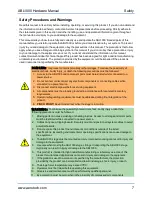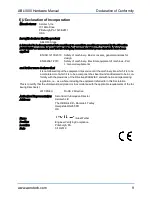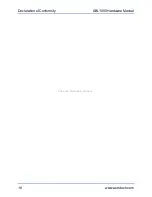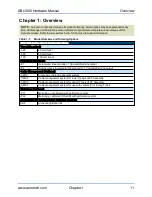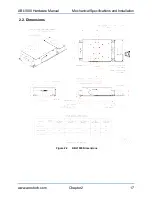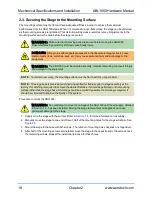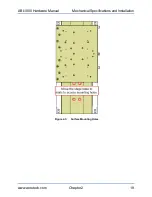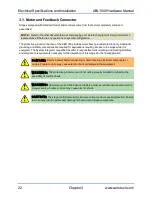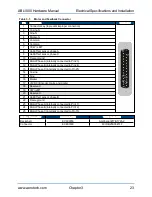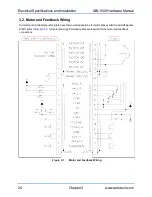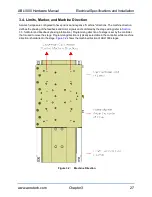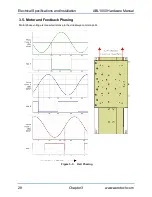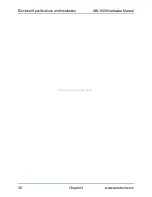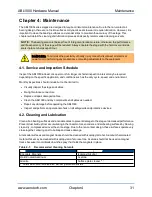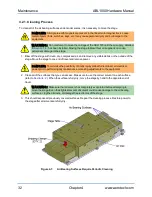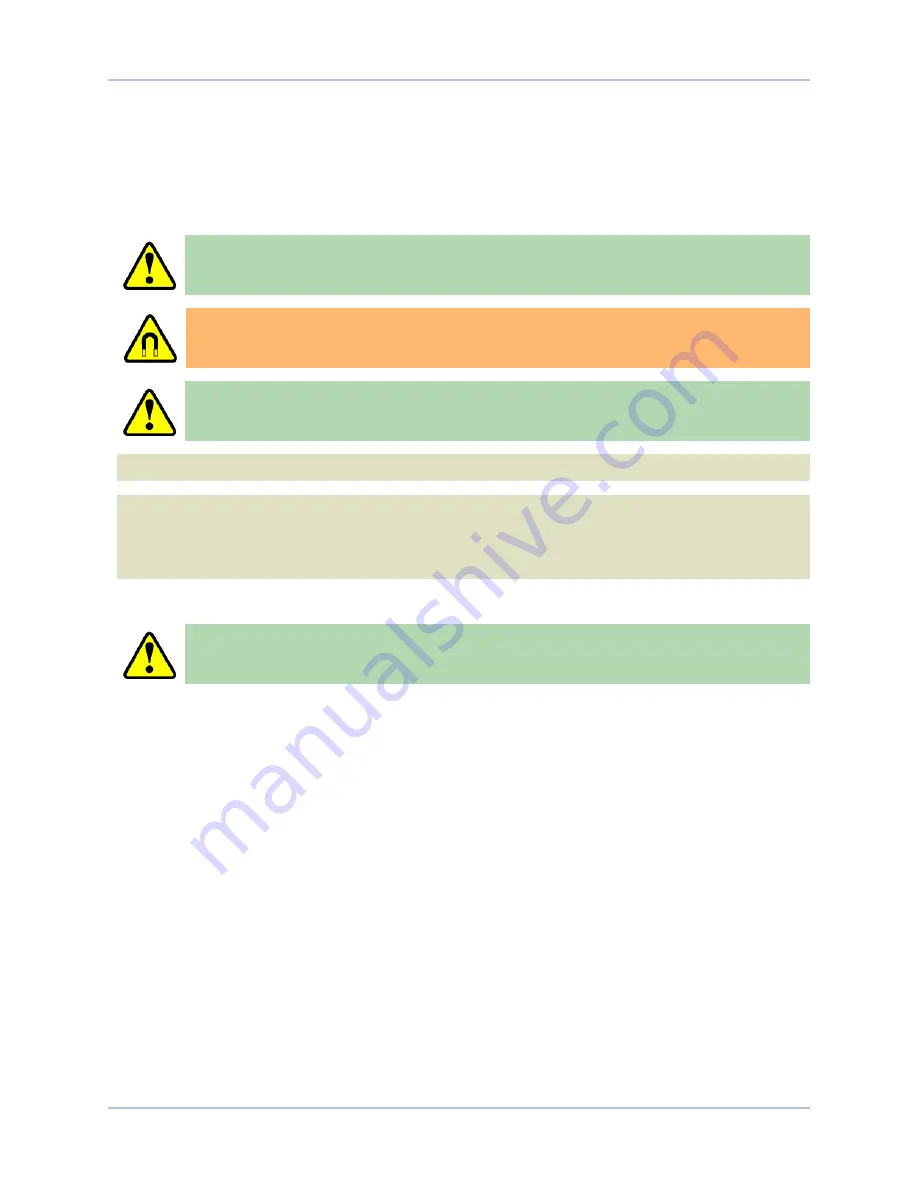
Mechanical Specifications and Installation
ABL1000 Hardware Manual
2.3. Securing the Stage to the Mounting Surface
The mounting surface must be flat and have adequate stiffness in order to achieve the maximum
performance from the ABL1000 stage. When it is mounted to a non-flat surface, the stage can be distorted
as the mounting screws are tightened. This distortion will decrease overall accuracy. Adjustments to the
mounting surface must be done before the stage is secured.
W A R N I N G : Make sure that all moving parts are secure before moving the ABL1000.
Unsecured moving parts may shift and cause bodily injury.
D A N G E R : Strong rare-earth magnets are present in the linear motor magnet track. Loose
metal objects (tools, watches, keys, etc.) may cause personal injury and/or damage to the
equipment.
W A R N I N G : The ABL1000 must be mounted securely. Improper mounting can result in injury
and damage to the equipment.
N O T E :
To maintain accuracy, the mounting surface must be flat to within 1 µm per 50 mm.
N O T E :
The stage base is precision machined and verified for flatness prior to stage assembly at the
factory. If machining is required to achieve the desired flatness, it should be performed on the mounting
surface rather than the stage base. Shimming should be avoided if possible. If shimming is required, it
should be minimized to improve the rigidity of the system.
Procedure to mount the ABL1000:
W A R N I N G : Do not attempt to move the carriage of the ABL1000 until the air supply, detailed
in
, has been installed. Moving the stage table without air supplied can cause
permanent damage to the stage.
1. Supply air to the stage with the air inlet. Refer to
for more information on air supply.
2. Manually move the stage to one end of travel. Half of the mounting holes for the stage will show. See
3. Mount the stage to the base with M5 screws. The number of mounting holes depends on stage travel.
4. After half of the mounting screws are installed, move the stage to the opposite end of travel to access
the remaining screws. Repeat the installation process for these holes.
18
Chapter 2
www.aerotech.com




